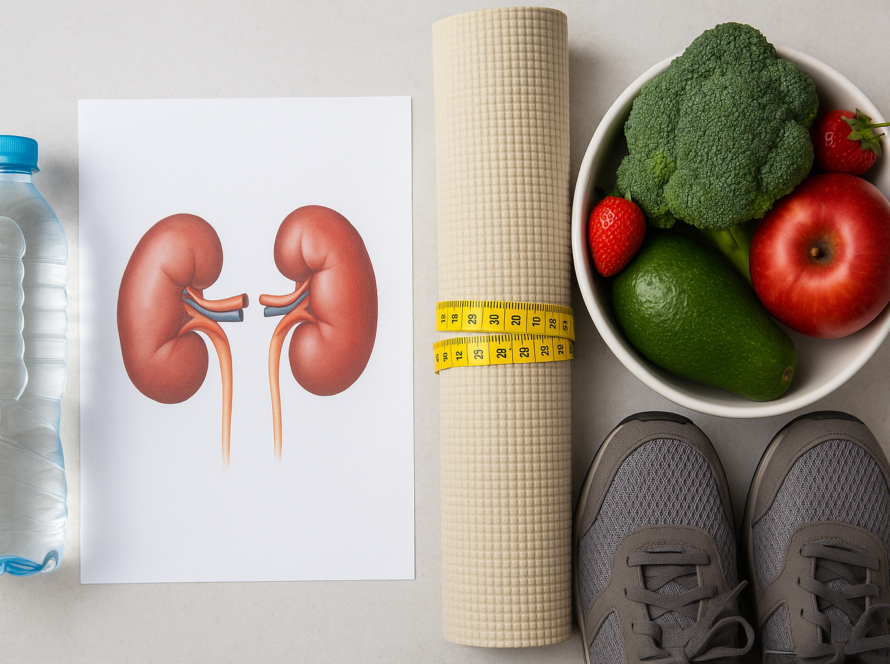What Your Bilirubin Test Reveals About Liver Health and Inflammation
When your doctor orders blood work, the list of results can feel overwhelming. Among them, bilirubin often stands out. At first glance, it may look like just another medical term buried in your lab report, but it carries important clues about your body. If you’ve ever wondered about the bilirubin test meaning, you’re not alone. This simple measurement can tell your doctor a lot about how well your liver is working and whether inflammation might be at play.
In this article, we’ll walk through what bilirubin is, how it connects to your health, and what your test results might reveal. We’ll also explore the reasons levels can rise, what’s considered normal, and what steps you can take to protect your liver for the long run.
What Is Bilirubin?
Bilirubin is a yellowish substance created when your body breaks down old red blood cells. Every day, millions of blood cells finish their life cycle, and bilirubin is what’s left behind. Normally, your liver processes this waste, mixes it into bile, and sends it off to your digestive system so it can leave your body.
If your liver isn’t working as it should, bilirubin can build up in your blood. That’s why your skin or the whites of your eyes might turn yellow in certain conditions. Doctors call this jaundice. Although bilirubin is a normal part of life, too much of it can signal that something deeper is going on with your health.
Bilirubin Test Meaning
A bilirubin blood test is a window into how your liver is functioning. By measuring how much bilirubin is circulating in your blood, doctors can check if your liver is effectively clearing it out.
There are two main types of bilirubin:
- Indirect (unconjugated): This form hasn’t reached the liver yet.
- Direct (conjugated): This form has been processed by the liver and is ready to be excreted.
When results come back, doctors look at the total bilirubin level as well as the balance between direct and indirect. This breakdown helps them understand whether the issue lies in the liver, red blood cells, or bile ducts. A high result doesn’t always mean disease, but it is a sign your doctor will want to investigate further.
Understanding Bilirubin Levels and Liver Health
Your liver is the body’s powerhouse for cleaning out waste and producing bile. Bilirubin levels and liver health go hand in hand because the liver is the main organ responsible for filtering and processing this pigment.
If bilirubin levels are too high, it may suggest your liver is under strain. On the other hand, levels that fall within a normal bilirubin range usually point to healthy processing and waste removal.
Here’s a general look at what’s considered typical:
Test Result | Approximate Range (mg/dL) | What It Means |
Normal | 0.3 – 1.2 | Liver likely functioning well |
Mildly high | 1.3 – 3.0 | Could be from minor inflammation, fasting, or Gilbert’s syndrome |
High | Above 3.0 | May suggest liver disease, bile duct obstruction, or blood cell breakdown |
Remember, exact ranges vary depending on the lab. That’s why your doctor’s interpretation matters more than the number alone.

Bilirubin and Inflammation
Inflammation is your body’s way of responding to injury or infection, but when it lingers, it can damage healthy tissue. The liver is particularly sensitive to inflammation, which can make it less effective at clearing bilirubin from your system.
Conditions like hepatitis, fatty liver disease, and even viral infections can all raise bilirubin levels. When your doctor sees a spike in bilirubin along with signs of inflammation, it helps paint a clearer picture of what might be happening in your body.
High Bilirubin Causes You Should Know
Not all high results mean the same thing. Doctors consider multiple factors when figuring out what could be driving the numbers up. Common high bilirubin causes include:
- Liver conditions: Hepatitis, cirrhosis, or liver scarring can all interfere with bilirubin processing.
- Gallbladder or bile duct problems: Gallstones or blockages can trap bilirubin, leading to higher levels.
- Blood-related issues: Hemolytic anemia or other conditions that break down red blood cells too quickly can overwhelm the liver.
- Genetic conditions: Disorders like Gilbert’s syndrome cause occasional spikes without being dangerous.
Some people notice physical symptoms when bilirubin levels rise, such as:
- Yellowing of the skin or eyes
- Dark urine
- Fatigue
- Abdominal pain or swelling
While these symptoms can be worrying, they are valuable warning signs that help doctors catch issues early.
Bilirubin Blood Test Explained
If your doctor orders a bilirubin test, here’s what usually happens:
- Preparation: You may be asked to fast for a few hours beforehand, although this isn’t always required.
- Blood draw: A sample is taken from a vein, typically in your arm.
- Processing: The lab measures total bilirubin along with direct and indirect forms.
- Results: Your doctor reviews the numbers in the context of your symptoms, medical history, and other tests.
The test itself is quick and low-risk, though you might feel a little soreness at the needle site. If your results are abnormal, your doctor may recommend further tests, like imaging or liver function panels, to get a clearer picture.
Normal Bilirubin Range and What It Means for You
A result that falls within the normal bilirubin range usually indicates your liver is doing its job. That means it is processing waste efficiently and keeping things balanced. But sometimes, results slightly above the normal line can still be harmless. For example, people with Gilbert’s syndrome often have mildly elevated bilirubin without serious health problems.
What matters most is the bigger picture: how you feel, what other tests show, and whether symptoms are present. Think of your bilirubin test as one piece of a larger puzzle rather than a verdict on its own.

How to Maintain Healthy Bilirubin Levels
Caring for your liver goes a long way in keeping bilirubin levels where they should be. Here are some everyday habits that help:
- Eat a balanced diet: Whole grains, fruits, vegetables, and lean proteins give your liver the fuel it needs.
- Stay hydrated: Water helps the body flush out toxins.
- Limit alcohol: Drinking less reduces stress on the liver.
- Exercise regularly: Physical activity improves circulation and metabolic health.
- Avoid unnecessary medications: Some drugs can be hard on the liver if taken in excess.
These steps won’t just support your bilirubin levels, but also your overall well-being.
When to Seek Medical Advice
If you notice your skin or eyes turning yellow, your urine becoming very dark, or if you’re dealing with unexplained fatigue and abdominal pain, it’s important to check in with your doctor. These could be signs of liver problems or other underlying conditions that need attention.
Even if you feel fine, regular checkups can catch changes before they turn serious. Your doctor can help you understand what your bilirubin results mean in your specific situation and guide you toward the right next steps.
Conclusion
Your bilirubin test may seem like just another number on a lab sheet, but it holds valuable insights about your liver and your health as a whole.
By understanding the bilirubin test meaning and how it relates to inflammation and liver function, you can take a more active role in caring for your body. If your results are outside the normal range, don’t panic.
Instead, use it as a chance to learn, ask questions, and explore personalized support like the Longevity Program at Lifespire to guide your health journey with expert care and tools.


